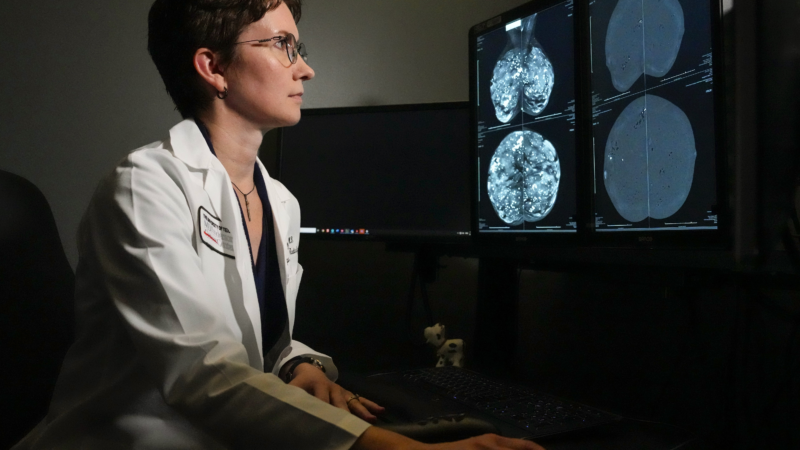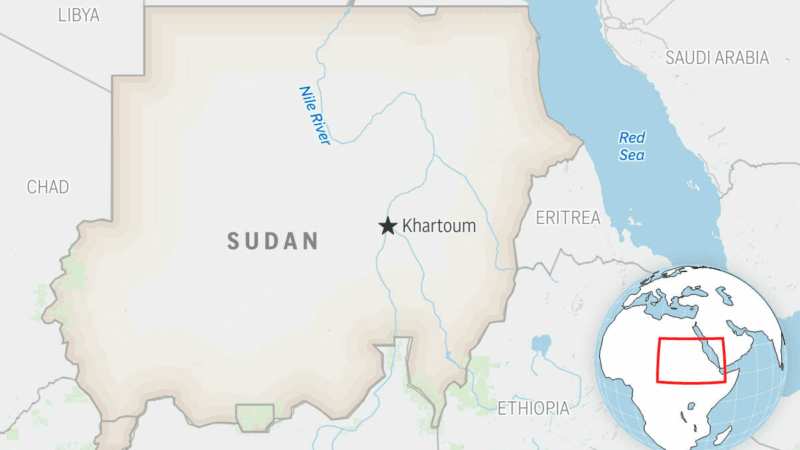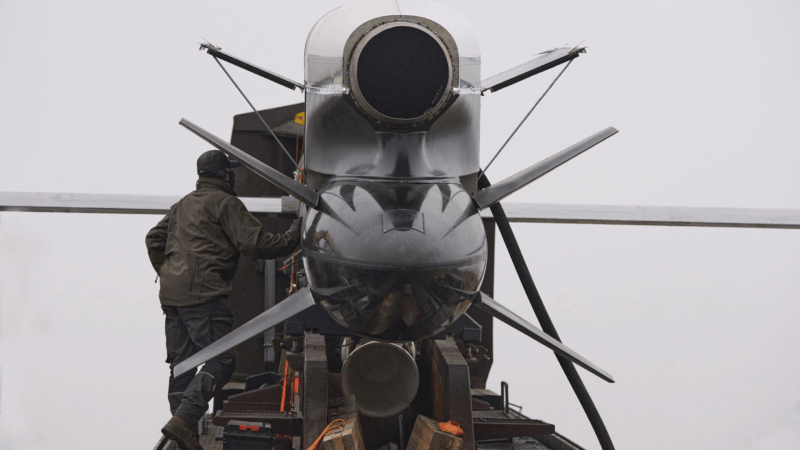Diagnosed with ‘dense breasts’? You may need more than a mammogram
Joy, a 46-year-old in Pittsburgh, recalls being the same age as her teenage boys, when her own mother diligently got cancer screenings. “She had her mammograms every year,” Joy says.
But, Joy thinks her mother likely had “dense breasts,” as she does. That means more concentrated clusters of glands and tissue, as opposed to fat. So the 2D, black-and-white images of a typical mammogram x-ray likely didn’t catch the tumor her mom had until it had grown big enough to feel.
“She was diagnosed at age 43 and by 48 she was gone,” says Joy, who asked that NPR use only her first name as she hasn’t shared her health information widely with friends and family.
When Joy herself turned 43, she enrolled in a breast-imaging study, which gave her a mammogram that came back showing nothing of concern. But then, after researchers followed up with more high-contrast imaging, Joy got a call back: “We think we see something.”
About 40% of women fall into the categories ranging from dense to extremely dense breasts — putting them at higher risk of developing cancer, which is also harder to detect on 2D or even newer 3D mammograms.
New information, but still a tough question
As of September 2024, federal regulations began requiring all mammogram reports to include information about breast density, including language saying, “in some people with dense tissue, other imaging tests in addition to a mammogram may help find cancers.”
But with 40% of women falling under these dense breast categories, when is magnetic resonance imaging, known as MRI, or other follow-up imaging a good idea?
It is a tough question to answer, and there is not a one-size fits all approach.
The U.S. Preventive Services Taskforce is the expert body that makes recommendations for primary care doctors and sets which screening tests should be fully covered by insurance. It says evidence is “insufficient to assess the balance of benefits and harms of supplemental screening for breast cancer,” including ultrasounds and MRIs, for women with dense breasts. Harms of additional screening could include subsequent testing such as biopsies and exposure to more radiation, if follow up x-rays are ordered.
Cost is a barrier
Joy’s second image caught a tumor early enough to remove it completely. So she wishes follow-up MRIs were more routine and readily available. “I think it should be more automatic,” says Joy.
But in fact, the vast majority of eligible women currently do not get the follow up screening. MRI machines are in short supply around the country, and sometimes hard for patients to get to, making it hard to get appointments.
But “cost is the biggest barrier, and most of the supplemental imaging is not covered by insurance,” with out-of-pocket costs for an MRI about $1,000, says Krissa Smith, vice president of education at Susan G. Komen Breast Cancer Foundation.
Smith says there are questionnaires and online tools — including on Komen’s Web site — to help women gauge their personal cancer risks. Still, she says, assessing whether a followup MRI is recommended is not a simple question to answer, because family history, genetics, weight, and lifestyle can all factor into one’s risk, so she recommends starting with a doctor.
“It really has to be a conversation with your doctor, because if you have other risk factors, [like] a family history of breast cancer, that’s going to be a more targeted conversation for you and what you need,” she says.
Dr. Wendie Berg did that, a decade ago.
“I had put in my own risk factors into the risk models and determined that I, in fact, was high risk, and I knew I had dense breasts,” says Berg, a radiology professor at the University of Pittsburgh, who researches breast imaging. But her doctor wasn’t familiar with the latest science: “I contacted my doctor and I said I would like to get a screening MRI. And he said, ‘Well, remind me why you want to do that?'”
Berg says the lack of physician education about breast density remains a problem today.
MRIs find more cancers
According to Berg’s own findings, mammograms detect, on average, five cancers out of 1,000 patient scans. Ultrasounds catch a couple additional. “We added a screening MRI and found another 15 cancers per thousand, even after the mammogram and ultrasound,” she says, meaning it detected far more cancers at earlier stages.
Unlike a CT scan, MRIs do not expose patients to radiation.
Yet — for various reasons, cost, complexity, or lack of awareness — Berg says fewer than a tenth of those eligible for the follow-up MRIs, get them. Often, she says, doctors don’t have the time to go through each patient’s risk assessments to help determine whether they should pursue an additional MRI.
Berg shares some of the relevant information on an educational Web site, densebreast-info.org, where she is chief scientific officer.
Berg benefitted from her own self-advocacy with the MRI she pushed her doctor for 10 years ago. “As luck would have it, that MRI showed a small, invasive cancer that is not visible on my mammogram,” she says. That early detection enabled her to remove the tumor entirely, and she remains cancer free.
Berg says right now the onus is on women to take charge and advocate for themselves, with doctors and, if possible, for insurance coverage. “It remains incumbent on the woman herself to look at her risk factors, to talk to her doctor and say, ‘Hey, I’d like to get an MRI,'” she says. “Don’t wait for them to recommend it to you.”
‘The Abandons’ is a sudsy soap opera dressed up in spurs and a cowboy hat
On the surface it's a gorgeous, hardscrabble Western, awash in stark landscapes, grubby faces, bar fights and banditry. But scratch away the grime, and you expose the pure, glitzy soap opera beneath.
Sudanese paramilitary drone attack kills 50, including 33 children, doctor group says
Thursday's attack is the latest in the fighting between the paramilitary group, the Rapid Support Forces, also known as the RSF, and the Sudanese military, who have been at war for over two years.
Russia unleashes drone and missile attack on Ukraine as diplomatic talks continue
Russia unleashed a major missile and drone barrage on Ukraine overnight into Saturday, after U.S. and Ukrainian officials said they'll meet on Saturday for talks aimed at ending the war.
Takeaways from the latest special election and what it means for control of the House
There was yet another sign this week of a potential 2026 wave that could hand control of the House of Representatives to Democrats.
West Virginians question National Guard deployments after attack on 2 of their own
Army Specialist Sarah Beckstrom was fatally shot in Washington, D.C., while Air Force Staff Sergeant Andrew Wolfe was seriously wounded. Trump says the deployments are necessary to fight crime, but others disagree.
Trump official signals potential rollback of changes to census racial categories
Trump officials are reviewing changes to racial and ethnic categories that the Biden administration approved for the 2030 census and other federal government forms, a White House agency official says.






